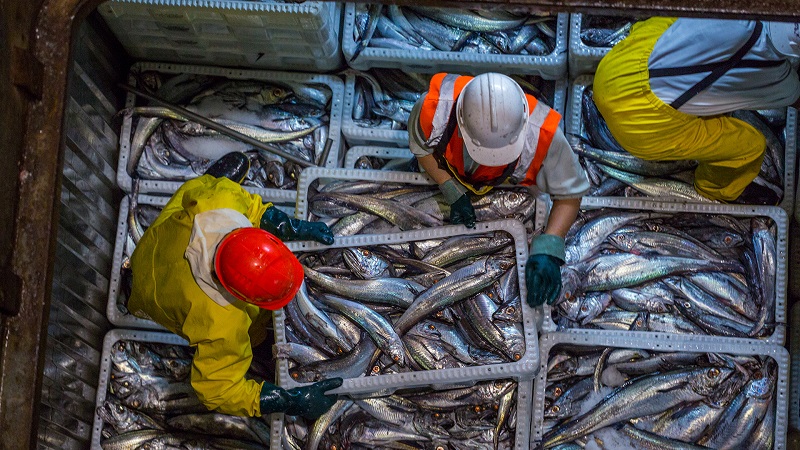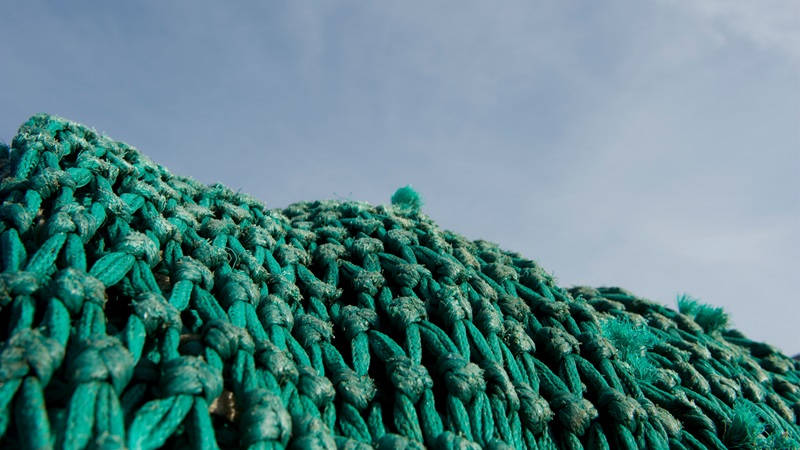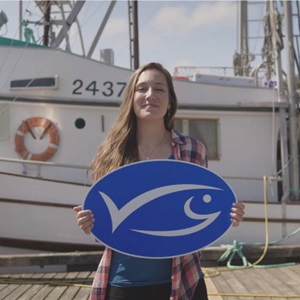Is seafood caught through bottom trawling sustainable? Find out more about this method of fishing and how its impact on the ocean can be reduced.
What is bottom trawling?
Bottom - or demersal - trawling is a fishing method that uses towed nets to catch fish and other marine species living on or close to the seabed.Bottom trawling includes several different types of fishing gear that use a cone-like net with a closed end (cod-end) that holds the catch. The net is towed by one or two boats and held open by boards (trawl doors) or a metal beam. These devices often make contact with the seabed.
/rs5074_bottom-trawl-contentbody.png?sfvrsn=6f82b945_6)
Which species are caught by bottom trawling?
Many commonly eaten species can be caught using bottom trawls. These include whitefish like cod, haddock, and hake, and flatfish such as halibut and sole. Prawns, shrimp, and squid can also be caught through this method.Why do fisheries use bottom trawling gears?
Bottom trawling is an efficient way to catch large quantities of fish and shellfish that live on the sea floor, which are needed to feed a growing global population. Around a quarter of all wild-caught seafood is caught via this method every year.
Fish are an important source of nutritious food, with over 3 billion people relying on our oceans for a major source of protein and other nutrients such as omega-3 fatty acids, iron and vitamin B12.

Is bottom trawling harmful?
Bottom trawl gears come into contact with the seabed and this can cause damage to the habitats and marine organisms found there if fishing activities are not well-managed.As seabed habitats vary throughout the ocean, the impact of bottom trawling depends on the type of habitat encountered and the species present. Habitats that contain fragile, long-lived, or slow-growing species such as corals and seapens are particularly vulnerable and should not be trawled as they may be unable to recover.
However, some habitats have more resilience, such as sandy or muddy seabeds in shallow waters that are regularly exposed to disturbance from strong waves and storms.
Bottom trawling is also associated with high levels of unwanted catch - or bycatch - as the nets used can be unselective. This can lead to accidental capture of non-target species, or young or undersized fish. It is important that such impacts are carefully managed and reduced through measures such as gear modifications to improve selectivity.
Can the seabed impact of bottom trawling be reduced?
Damage to habitats can be prevented by avoiding bottom trawling in areas with more sensitive habitats.
Seabed mapping and habitat surveys are used to detect areas that contain sensitive habitats and species and identify where fishing activity overlaps, using vessel monitoring and tracking data (VMS). This enables fisheries to avoid these areas and adapt their practices to minimize the impact of any interactions.
Areas containing more sensitive habitats can be closed to fishing altogether. Closures are often introduced by governments or regional fisheries management authorities, or fisheries may decide to close regions voluntarily. For example, the Scottish trawl fleet immediately closed an area to its vessels following the discovery of vulnerable seapens rather than waiting for the region to be designated as a Marine Protected Area.
Action can be taken to protect un-trawled regions from bottom trawling. The South African hake trawl fishery voluntarily 'froze' its trawl footprint in 2007 and can only operate in specific zones that have already been trawled. Agreeing to operate within these boundaries is now a condition for obtaining a fishing license.
Impacts on habitats can also be reduced by modifying the gear used and how it is operated. This can include limiting the weight and size of gear and decreasing the number of contact points between gear and seabed. For example, rubber disks or balls can be added to the ropes that are pulled across the seafloor either side of the net.

How can bottom trawl fisheries reduce bycatch?
Many fisheries modify their fishing gear to reduce bycatch. Understanding which non-target species are at risk of being caught and how to avoid them is also key.Bycatch reduction devices are an effective way to allow large or unwanted species to escape trawl nets. Many cold-water prawn fisheries – such as the Scotian Shelf Northern prawn trawl fishery in Canada - have reduced unwanted catch of groundfish such as cod and haddock by adding a grid-like exclusion device (the "Nordmore grate") to trawl nets. These prevent the fish from entering the cod-end (while allowing the smaller prawns to pass through) and funnel them towards an escape hole in the top of the net.
The use of exclusion devices has also virtually eliminated turtle bycatch in the Australian Northern Prawn fishery. This fishery is also carrying out research to understand how and when sawfish bycatch is occurring and identify new ways to reduce it.
Can bottom trawling fisheries be sustainable?
Bottom trawl fisheries can be certified as sustainable if they meet the requirements of the MSC Fisheries Standard and pass an assessment carried out by an independent third-party.Fisheries using bottom trawl gear can only achieve MSC certification if they can demonstrate they do not cause serious or irreversible damage to seabed habitats and biodiversity.
During an assessment, fisheries must provide evidence to show there is an understanding of the habitats encountered and the impact of fishing activity. This can include seabed surveys and mapping to identify different habitats and where fishing overlaps.
Fisheries should avoid using trawl gear in areas where sensitive habitats have been found. However, if there is a chance that gear may interact with such habitats, fisheries will be required to demonstrate that effective precautionary measures are in place.
The fishery must also provide quantifiable evidence to show that impacts on endangered, threatened and protected species, and out-of-scope species (birds, mammals, amphibians, and reptiles) are being effectively managed and minimized. Measures must also be in place to prevent gear loss and reduce the impact that any lost gear may have on the marine environment.
How MSC Certified Fisheries are Improving
How does MSC certification drive improvements in sustainability?
MSC certification incentivizes bottom trawl fisheries to reduce their impact on the marine environment. Not only do many fisheries need to make improvements to meet our Standard, but many are required to continue improving after certification.Since 2017, fisheries have made 123 improvements to better understand the impacts of bottom-towed gears on habitats and ecosystems and how to reduce them – including carrying out seabed surveys and developing maps so vulnerable ecosystems can be avoided. Over 90 improvements have also been made to reduce impacts on endangered, threatened, and protected species, such as modifying gear to reduce bycatch.




